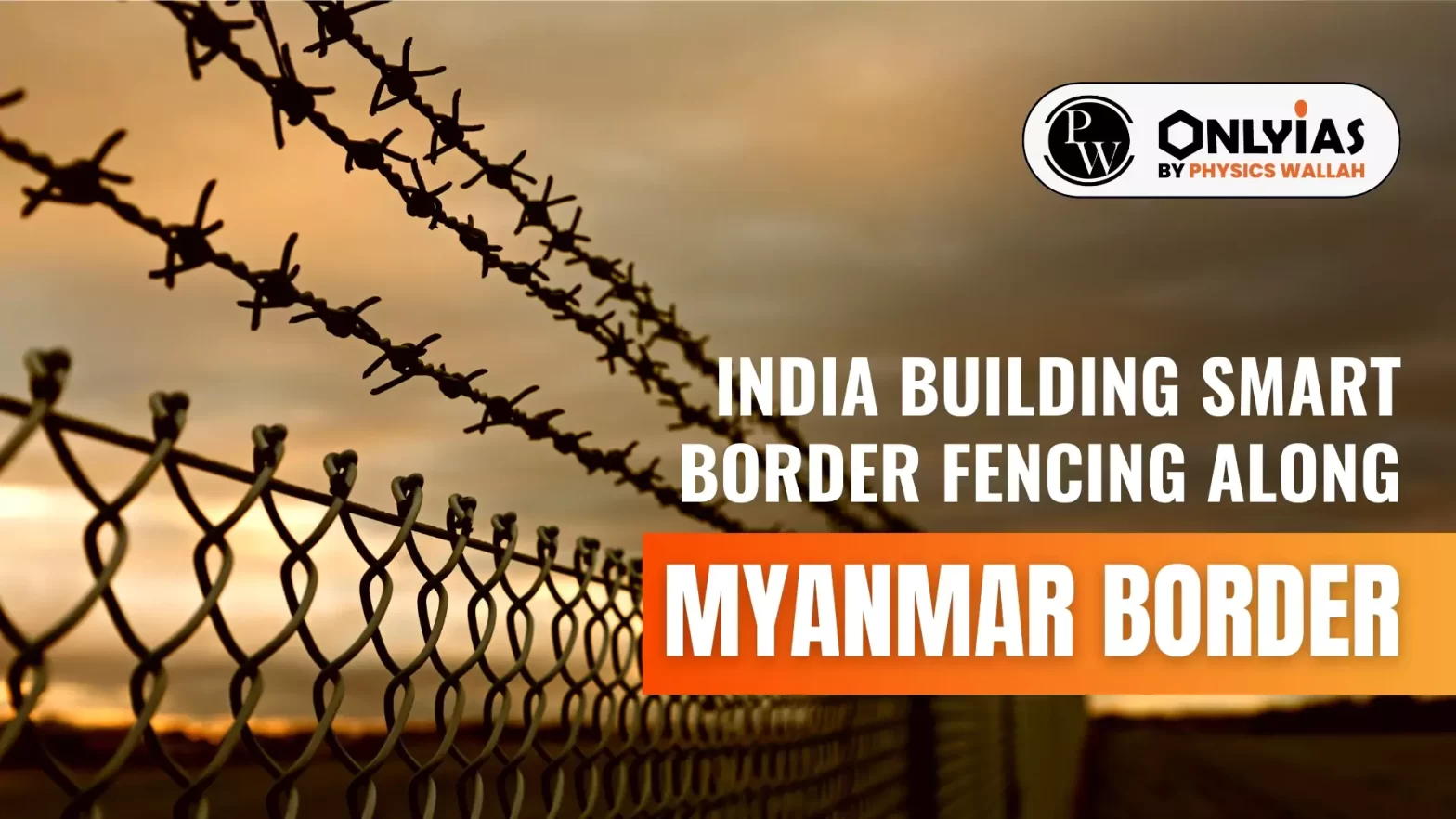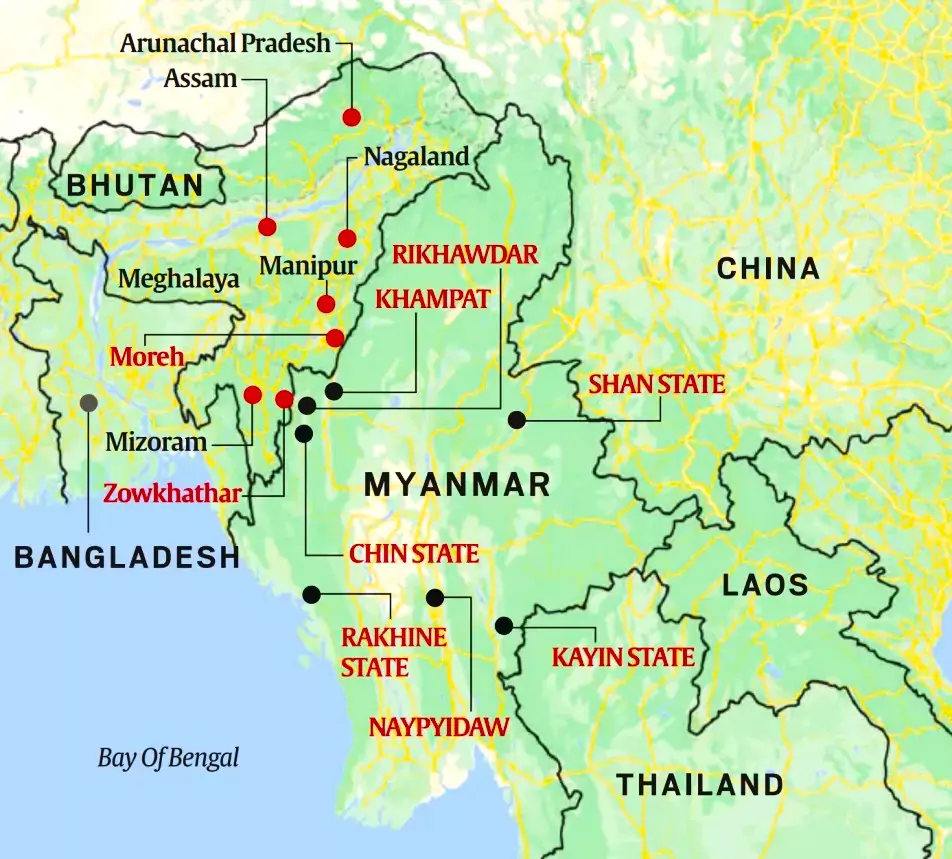The government is set to issue orders for Smart Border Fencing for an additional 300 kilometers out of the 1,643 km of India Myanmar Border.

The government is set to issue orders for Smart Border Fencing for an additional 300 kilometers out of the 1,643 km of India Myanmar Border, running along Arunachal Pradesh, Nagaland, Manipur and Mizoram.
| Relevancy for Prelims: Myanmar Crisis, India Myanmar Border, Smart Fence Project, Free Movement Regime (FMR), and United Nations High Commission for Refugees (UNHCR).
Relevancy for Mains: India Myanmar Border: Challenges, Issues and Way Forward to the Indo-Myanmar Border Management. Importance: GS Paper – 2, India and its Neighbourhood, Effect of Policies & Politics of Countries on India’s Interests, GS Paper – 3, Infrastructure, Security Challenges & their Management in Border Areas |
|---|
After the ethnic conflicts in Manipur in May 2023 in which more than 100 people died and thousands of people displaced, the central government decided to end the free movement regime (FMR) along the Indo-Myanmar border soon and started tendering a Smart Border Fencing system. Earlier, the Central government has started a project for fencing the border. The development follows the completion of a 10-kilometer pilot project last year and Smart Border Fencing order for an additional 80 kilometres, bringing the total length of Smart Border Fencing to 390 km. Some specific reasons for Smart Border Fencing the India Myanmar Border:
India Myanmar Border: An Overview
|
|---|

About Smart Fence Project
Other Smart Border Fencing Project By India
|
|---|
The primary goals of border management include securing the nation’s borders against hostile interests and implementing systems capable of intercepting such elements, all while facilitating legitimate trade and commerce.

About Free Movement Regime (FMR)
|
|---|
The implementation of Smart Border Fencing technology along the India Myanmar Border reflects a strategic response to address security challenges, ethnic conflicts, and illicit activities.
| Related Previously Asked Questions
Prelims Previous Year Questions Q) Department of Border Management is a Department of which one of the following Union Ministries? (2008) (a) Ministry of Defence (b) Ministry of Home Affairs (c) Ministry of Shipping, Road Transport and Highways (d) Ministry of Environment and Forests Ans- b Mains Previous Year Question Q) Analyze the multidimensional challenges posed by external state and non-state actors, to the internal security of India. Also discuss measures required to be taken to combat these threats. (2021) Q) Analyze internal security threats and transborder crimes along Myanmar, Bangladesh and Pakistan borders including Line of Control (LoC). Also discuss the role played by various security forces in this regard. (2020) Q) Border management is a complex task due to difficult terrain and hostile relations with some countries. Elucidate the challenges and strategies for effective border management. (2016) |
|---|
| Must Read | |
| NCERT Notes For UPSC | UPSC Daily Current Affairs |
| UPSC Blogs | UPSC Daily Editorials |
| Daily Current Affairs Quiz | Daily Main Answer Writing |
| UPSC Mains Previous Year Papers | UPSC Test Series 2024 |
No, earlier the USA has ordered to build a smart wall as a part of Smart Border Fencing on the US-Mexico border.
Smart Border Fencing is deployed where there is threat of insurgency, inflow of illegal immigrants and other activities which jeopardize the internal security of any side of the nation.
No, after deployment of Smart Border Fencing there will be legitimate movement of people and goods across the India Myanmar Border.

<div class="new-fform">
</div>